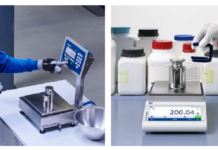India’s dependency on urea imports is projected to decrease to around 10-15 percent in the near future, down from a peak of roughly 30 percent in the fiscal year 2021, according to a study by Crisil Ratings. The reduction is largely attributed to the initiation and stabilization of new urea production capacities.
The new facilities are expected to achieve consistent regulated returns as their utilization rates improve. Meanwhile, legacy plants are anticipated to maintain stable profits this fiscal year, in line with raw material prices and existing policies.
Adequate subsidy allocation and stable credit profiles are expected to support the industry’s financial health. Crisil Ratings’ analysis, which covers urea producers responsible for approximately 70 percent of the industry’s capacity, highlights the progress towards self-sufficiency in the sector.
The urea industry, which accounts for around 55 percent of the demand for chemical fertilizers, has made significant strides in reducing import dependence. Between fiscals 2007 and 2012, urea demand growth exceeded production, leading to a rise in import share to 20-25 percent of consumption.
To address this, the government introduced the New Investment Policy 2012 (NIP 2012) in fiscal 2013. Under this policy, six plants with a combined capacity of about 7.62 million tons have been gradually commissioned over the past five fiscal years.
Anand Kulkarni, Director at Crisil Ratings stated, “The NIP 2012 has been instrumental in structurally reducing import dependence. The new plants are expected to operate at full capacity this fiscal year, up from 85-90 percent in the previous fiscal, as operations stabilize. The anticipated commissioning of another plant by the next fiscal year will further enhance domestic production”.
The increased capacity utilization is likely to boost the operating efficiency and profitability of the new plants this fiscal year. The new facilities benefit from healthy profitability, thanks to a minimum committed return on equity of 12 percent under NIP 2012.
For the remaining industry capacity (about 75 percent), profitability is expected to remain stable due to steady natural gas prices and consistent policy norms regarding energy efficiency and fixed-cost reimbursements.
As reported by thehindubusinessline.com, working capital cycles are also expected to stay stable, supported by government measures. The urea industry is heavily reliant on government subsidies, which typically account for 80-85 percent of sales.
Nitin Bansal, Associate Director at Crisil Ratings, added, “The budgetary allocation of ₹1.19 lakh crore for urea should be sufficient, and no significant build-up of subsidy receivables is anticipated this fiscal year”.































